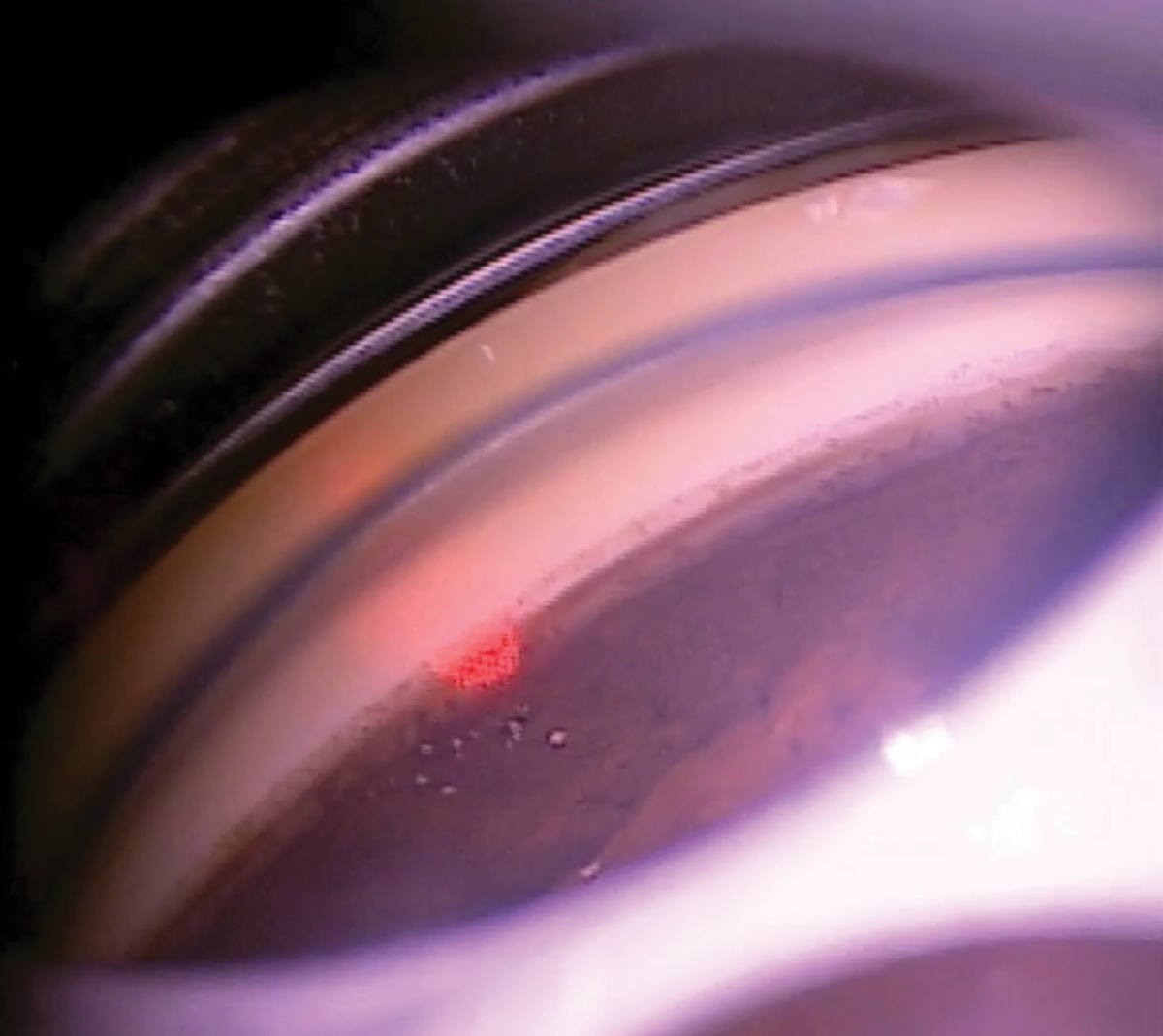 |
|
This study, which used data from the LiGHT trial, found that SLT was more successful at achieving ≥20% IOP lowering than drops at higher IOP, while PGA drops performed better than SLT at lower baseline IOP. Photo: Nate Lighthizer, OD. Click image to enlarge. |
A recent study used data from the LiGHT trial, which compared selective laser trabeculoplasty (SLT) to medication as the first-line therapy for ocular hypertension and open-angle glaucoma, to investigate the impact of baseline intraocular pressure (IOP) on the initial treatment response. The researchers aimed to determine whether baseline IOP had a differential effect on the efficacy of SLT vs. medication, which could help clinicians tailor treatment based on baseline IOP levels. The results, in congruence with findings of previous reports, suggest that IOP lowering is greater with higher baseline IOP for both SLT and topical hypotensive medication.
The post hoc analysis included data from 1,146 eyes of 662 participants in the LiGHT trial who received either SLT or prostaglandin analogue (PGA) eye drops at baseline. The researchers evaluated the absolute and percentage IOP reduction at eight weeks following treatment initiation for both SLT and medication groups across a range of baseline IOPs.The differences in IOP reduction between the two groups were tested using linear mixed-effects models.
The data showed that the pressure-lowering effect of both interventions was positively correlated with baseline IOP; both SLT and medication showed greater IOP lowering at higher baseline IOP and less IOP lowering at lower baseline IOP. In their paper on the study, published recently in Ophthalmology, the researchers wrote, “SLT tended to achieve more IOP lowering than PGA drops at higher baseline IOP, [while] PGA drops performed better at lower baseline IOP.” They specified that the difference in percentage IOP reduction between SLT and PGA drops was significant at baseline IOP ≤17mm Hg.
There was also a significant difference in the relationship between baseline IOP and the probability of achieving ≥20% IOP reduction between the two treatments, with SLT being more successful than PGA drops at baseline IOP >22.51mm Hg. The researchers noted in their paper that “at baseline IOP ≥30 mmHg, 105 of 107 eyes (98%) in the SLT group achieved ≥20% IOP reduction compared to 77 of 90 eyes (86%) in the drops group.”
It’s unclear why a higher baseline IOP produces a greater IOP lowering effect following SLT and drops, though the study authors propose a couple of theories in their paper. One is that “a higher pressure gradient may facilitate greater trabecular outflow after SLT. It has also been suggested that the mechanism of action of SLT, by improving aqueous outflow via the trabecular meshwork, may explain the observed greater response with elevated baseline IOP.” The authors continued, “With higher baseline IOP in ocular hypertension and POAG, there is presumably greater resistance to outflow at the level of the trabecular meshwork, and perhaps greater potential for IOP lowering with a treatment that targets that pathway.”
This study has several limitations such as the post hoc analysis design, a low number of eyes in certain baseline IOP subgroups, lack of consideration for disease severity and target IOP and lack of assessment of drop adherence. All these factors should be taken into account before applying these findings to clinical practice, the study authors caution. Once confirmed through larger studies, SLT may be considered a more effective treatment option for patients with higher baseline IOP, while PGA drops may be more suitable for patients with lower baseline IOP.
Fahy ET, Montesano G, Garg A, et al. The impact of baseline intraocular pressure on initial treatment response in the light trial: selective laser trabeculoplasty versus medication. Ophthalmology. July 2, 2024. [Epub ahead of print]. |


